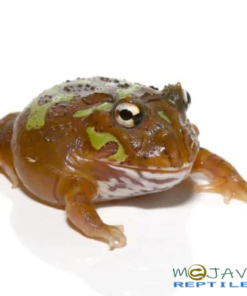The Ideal Reptile Enclosures: How to Produce the Ideal Habitat
Developing the best environment for reptiles is not just concerning putting them in a tank or enclosure; it entails a thoughtful factor to consider of numerous factors that add to their general health. From the dimension of the enclosure to the sort of substrate used, every element plays a vital function in providing an environment where your reptile can flourish. By comprehending the details needs of your reptile types and executing the ideal environment configuration, you can guarantee their health and wellness and happiness in captivity.
Selecting the Right Room Size
When selecting an enclosure dimension for reptiles, it is critical to consider their natural habits and room demands to ensure their health and wellness. Different reptile varieties have differing needs when it comes to habitat area.
A general rule of thumb is to provide enough area for the reptile to show all-natural habits, such as basking, concealing, climbing up, and foraging. By thoroughly thinking about the details demands of the reptile species in question, proprietors can produce an appropriate and enhancing environment that advertises total wellness and encourages natural behaviors.
Setting Up Appropriate Burner
To ensure the health and health and wellness of reptiles in their enclosures, it is essential to meticulously establish up proper home heating aspects. When establishing up heating elements in a reptile room, it is important to think about the specific temperature requirements of the varieties you are caring for.
One typical and effective burner for reptile units is a heat light or ceramic heat emitter. These heat resources can be used to produce a temperature gradient within the unit, enabling reptiles to relocate between warmer and cooler areas as required. Furthermore, under-tank home heating pads or heat floor coverings can be used to offer stubborn belly warm, which is specifically valuable for reptiles that call for extra warmth to assist in digestion.
Keeping an eye on the temperature level within the enclosure using a thermometer is vital to ensure that the heating aspects are preserving the ideal temperature level array for your reptile. Routinely inspect and change the home heating aspects as required to develop a healthy and balanced and comfy setting for your flaky friend.
Selecting Appropriate Lighting Fixtures

Offering the Suitable Substrate
Choosing the ideal substratum is essential for creating a comfortable and appropriate atmosphere for reptiles in their rooms. The substratum offers different functions, consisting of supplying a structure for all-natural habits like tunneling, helping in preserving proper humidity levels, and providing a comfortable surface for the reptile to relax upon - rain frog for sale. When picking a substratum for your reptile unit, it is crucial to consider the species-specific needs of your animal. Some reptiles, such as desert-dwelling species like bearded dragons, flourish on substrates like calcium sand or reptile carpet, while others, like round pythons, favor coconut husk or aspen bed linens to preserve humidity levels.
Avoid substrates that can create impaction, such as loose substratums like sand or gravel, particularly for reptiles recognized to ingest their bed linens. Frequently cleansing and replacing the substrate is essential to guarantee a hygienic and tidy setting for your reptile.
Decorating for Enrichment and Convenience
Thinking about the substrate's role in providing a structure for natural behaviors and maintaining an ideal atmosphere, enhancing the reptile enclosure with correct designs is important for both enrichment and comfort. When enhancing the room, it is important to consider the reptile's species-specific demands and habits to create a room that promotes physical and mental wellness. By incorporating a range of decorations that resemble the reptile's all-natural habitat, proprietors can ensure their pet dog's comfort and stimulate their all-natural instincts, inevitably leading to a happier and much healthier reptile.
Conclusion

Creating the best environment for reptiles is not simply concerning placing them in a tank or room; it includes a thoughtful factor to consider of numerous click for more info factors that contribute to their general wellness.Choosing the proper substratum is crucial for creating a comfy and ideal setting for reptiles in their units. Some reptiles, such as desert-dwelling varieties like bearded dragons, grow on substratums like calcium sand or reptile carpeting, while others, like round pythons, prefer coconut husk or aspen bedding to maintain moisture degrees.
By including a selection of decors that resemble the reptile's all-natural environment, owners can ensure their animal's comfort and stimulate their natural reactions, inevitably leading to a better and much healthier reptile.
In final thought, producing the optimal habitat for reptiles involves picking the ideal unit size, heating elements, lighting components, substratum, and designs.
Comments on “Rain Frog for Sale: Elevate Your Collection with Rare and Exotic Amphibians!”